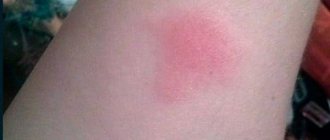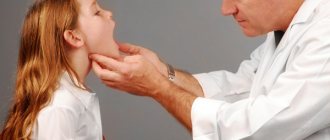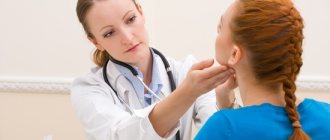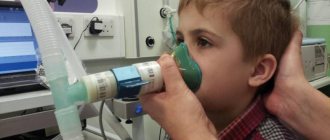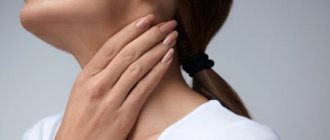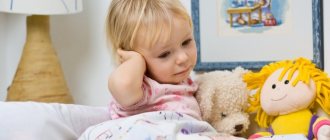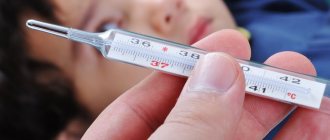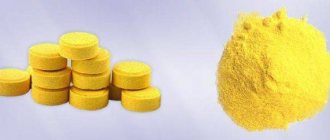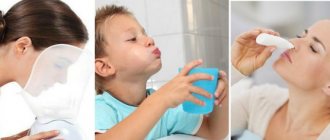Inhalation therapy gives good results. However, to obtain them, knowledge and compliance with the rules for performing the procedure are required. Today there is a large amount of literature teaching the intricacies of inhalation, but many people are still not aware of them. This concerns the question of whether inhalations are done before meals or after meals.
The diet during inhalation therapy is an important point on which it depends whether the manipulation will provide maximum benefit to the patient. Carrying out inhalation as prescribed by medicine will prevent possible discomfort after the session.
The influence of food intake on the effectiveness of inhalations
Most doctors are unanimous on the issue regarding the most optimal time for the inhalation procedure. The session is preferably carried out during the period of time between two meals. It is not recommended to do this on an empty stomach. Inhaling vapors saturated with medicinal substances before breakfast or lunch is fraught with severe nausea for the patient.
During inhalation, a certain amount of solution particles also enters the esophagus and stomach. Medicinal substances act irritatingly on the mucous membrane of the walls of the gastrointestinal tract, which causes the secretion of bile with gastric juice.
If this happens in the morning before breakfast, when there is no food left in the stomach, it may provoke heartburn in the patient. People suffering from gastritis are especially susceptible to it. For patients with this problem, the doctor prescribes drugs like Bifiform or Linex in order to normalize the intestinal microflora.
It is not advisable to carry out inhalation not only on an empty stomach. This should not be done immediately after eating. The aromas of the medicinal aerosol cause nausea in some patients. In case of a full stomach, vomiting is possible. For this reason, you should not eat food immediately before the session.
Contraindications
Inhalation through a nebulizer has contraindications. You cannot perform manipulation when the patient has increased temperature and swelling of the larynx, nosebleeds or a tendency to them (the blood vessels of the nasopharynx are too fragile and brittle).
The doctor who prescribes inhalations through a nebulizer will explain how many times and when the procedure can be done, find out the presence of heart and vascular diseases, and respiratory failure. The procedure cannot be done in some severe cases of pneumonia, or with exacerbation of bronchial asthma.
Before taking medicinal solutions, make sure that the body adequately responds to the components and substances in the composition and that they do not cause allergic reactions. This applies to a greater extent to those medicinal solutions that contain herbal extracts or flower infusions.
Read also: Hot injection into a vein composition
general information
Inhalation therapy is a gentle but effective way to treat diseases affecting the respiratory system. It is an addition to taking medications in the form of tablets and syrups. Unlike the oral use of drugs, the healing solution sprayed into an aerosol penetrates directly into the focus of the inflammatory process.
Medicinal vapors affect the mucous membrane of the respiratory tract affected by the disease. This ensures a quick therapeutic effect. The patient recovers faster. The use of inhalation also helps to remove sputum and mucus containing pathogens.
Step-by-step instruction
Inhalation sessions are carried out in several ways:
- through a special device called a nebulizer (compression, membrane or ultrasonic type),
- steam, which involves inhaling warm moist vapor over a saucepan with a healing solution or water with the addition of soda or salt,
- through the use of a steam inhaler (a device that allows you to inhale the fumes generated by a medicinal solution).
Inhalation, carried out using a steam inhaler or using a wide container, must be carried out in compliance with the temperature of the liquid not exceeding + 40 degrees Celsius.
During the steam session, you should bend over a saucepan with an inhalation solution (possibly a jacket potato), maintaining a distance of 20-30 cm. To enhance the effect of the manipulation, it is recommended to cover your head with a blanket. It is acceptable to use essential oils or herbal infusions for steam inhalation.
Using a nebulizer, the session is carried out as follows:
- the manipulation is carried out while sitting,
- use only those medications prescribed by a specialist,
- Only saline solution can be used as a solvent (other liquids such as distilled or boiled water cannot be used),
- To fill the device with a medicinal solution, use sterile needles and syringes,
- breathing during inhalation should be deep, slow,
- you should try to hold your breath for a couple of seconds before exhaling,
- At the end of the session, the device is washed and dried to prevent crystallization of drugs and bacterial contamination.
Inhalation treatment using medications is possible only through a nebulizer. They must be prescribed by a doctor. Self-prescribing them to yourself or your child is unacceptable.
Many types of medications can be used in a nebulizer. This is about:
- Mucolytics like ACC, Ambrohexal, Pectusin, Sinupret.
- Expectorants like Lazolvan, Ambrobene or Ambroxol.
- Bronchodilators to relieve bronchospasm. We are talking about Berodual, Ventolin, Berotek, Salbutamol.
- Drugs with hormones such as Beclomethasone, Pulmicort, Seretide,
- Antiseptics like Furacilin, Tonsilgon, Decasan.
- Antibiotics prescribed for damage to the lungs and lower respiratory system, such as Dioxidin, Thiamphenicol, Acetylcysteinate.
When is the best time to inhale?
The correct mode of performing procedures includes:
- Inhalation is carried out three times during the day. This is the optimal amount for effective therapy.
- The first session should be performed immediately after sleep. The accumulation of mucous masses that occurred during the night will go away. This will ensure control over the night period.
- It is good to carry out the inhalation procedure in the middle of the day. It is permissible to determine a specific time. For example, from 13 to 16 hours. Inhalation is carried out when the patient begins to cough and cannot clear his throat.
- A session should also be held in the evening hours. The most favorable time for this is 18 hours. Experts may prohibit breathing steam later than 1.5-2 hours before falling asleep.
If you do not deviate from these instructions, the healing process will come faster.
Why you need to follow the recommendations
The period of time allotted for therapy through any inhalation device is not determined randomly. Can I eat after inhalation? You should not eat food or drink tea immediately after an inhalation session for a number of different reasons:
- If there is food in the gastric tract at the time of therapy, then inhalation of aromatic oils, which is not addictive, can provoke vomiting. Oils tend to irritate the stomach walls, leading to nausea and heartburn. This especially needs to be taken into account in pediatric therapy.
- After manipulation, a protective film is formed on the walls of the throat, facilitating better absorption of the medication. Not all medications are absorbed instantly. They need time for this. That is why eating immediately after the inhalation procedure is prohibited.
- Eating food immediately before inhalation will deprive it of its effectiveness. After inhalation, the medication will settle not on the diseased tissue surface, but in the gastrointestinal tract with food.
These recommendations must be followed to ensure that food intake does not affect the effectiveness of the inhalation procedure.
For children
Do inhalations with solutions based on essential oils only after meals. Some odors cause nausea and vomiting, and in addition, oil solutions that settle on the mucous membrane are absorbed into the tissues and blood vessels for a long time.
Procedures can be performed on infants only with a doctor's prescription. In this case, the pediatrician will calculate the amount of solution required, the time of one session and describe the procedure for performing the manipulation, taking into account the baby’s breastfeeding schedule. Consult your doctor on this issue, because the baby's gastrointestinal tract is sensitive, and the gag reflex appears even due to swallowing.
Follow your doctor's recommendations. Self-medication may not bring the desired result and complicate the course of the disease.
Inhalation therapy gives good results. However, to obtain them, knowledge and compliance with the rules for performing the procedure are required. Today there is a large amount of literature teaching the intricacies of inhalation, but many people are still not aware of them. This concerns the question of whether inhalations are done before meals or after meals.
The diet during inhalation therapy is an important point on which it depends whether the manipulation will provide maximum benefit to the patient. Carrying out inhalation as prescribed by medicine will prevent possible discomfort after the session.
An exception
There are exceptions to the general rules when inhalation is allowed 15-20 minutes before meals. It is permissible to resort to such a measure if the patient’s health prevents him from eating fully due to pain and swelling in the throat or bronchi.
In this situation, healing vapors will give the sick person a short respite from unpleasant symptoms and the opportunity to eat painlessly. However, the benefit of such a session is offset by the passage of food through the esophagus.
This violates the integrity of the film that arose after manipulation of the mucous membrane of the inflamed throat. For this reason, you should give preference to eating liquid food or refuse to eat. It is permissible to drink rich broth or milk drinks.
When is it better to do it: before or after meals?
The question of whether inhalation sessions should be carried out before or after meals arises for most people suffering from respiratory tract diseases. The optimal time to do the procedure is the period after the first meal and before the next meal. It is recommended to wait 1-1.5 hours after eating so that food does not affect the effectiveness of therapy.
After inhalation, you should also not eat food right away. How long after you can start eating depends on the medication used for the session. In most cases, it is enough to wait about an hour so that small particles of the medication do not remain on the larynx.
If you inhale medications containing active ingredients in the form of extracts or aromatic oils before your first meal, you may experience a strong feeling of nausea. The molecules of the drug mixture will penetrate through the esophagus into the stomach and cause irritation of its walls. As a result, the secretion of bile and gastric juice will begin, which can further lead to heartburn.
After the steam procedure, a protective film is formed inside the larynx, which helps the medication to be absorbed faster and act on the body. It is important to understand that not every drug has the ability to be absorbed quickly. It is for this reason that you must wait after the procedure and refrain from eating.
An exceptional case is when a person, for physical reasons, is unable to consume food without inhalation. With some infections, the pain in the throat is so severe that it is impossible to eat without intervention. In such situations, you must first perform the treatment procedure and only then start eating.
In order not to damage the integrity of the protective film in the larynx, it is recommended to limit the diet to soups and liquid cereals. Otherwise, the effectiveness of treatment is reduced.
Inhalation of small patients
Inhalations for infants can only be carried out as prescribed by a doctor. He will determine the required amount of medicinal solution, the duration of the sessions and the frequency of their implementation, taking into account the infant’s feeding regimen. Small children have high sensitivity of the gastrointestinal tract, so consultation with a doctor about feeding and inhalation is very important.
Steam manipulation is contraindicated for children under one year of age. It is also prohibited if the child’s body temperature is elevated (more than +37.1 degrees Celsius).
Nebulizer treatment for children is permitted at elevated temperatures (up to 37.9 degrees). In such cases, it is necessary to first reduce the temperature with an antipyretic (for example, Paracetamol). However, you cannot act at your own discretion; you need to get specialist advice about the admissibility of inhalation against the background of an elevated child’s temperature.
To ensure the effectiveness and safety of children's inhalation, it is recommended to follow the following recommendations:
- At the end of the manipulation, the child is allowed to drink and eat. If a mask was used during the session, then it is necessary to rinse the small patient’s mouth, eyes and face.
- It is recommended to treat children with inhalation under the close supervision of adults. The session should not exceed ten minutes. The course of therapy ranges from 6 to 15 sessions. You must strictly follow all the pediatrician's prescriptions.
If there are no positive results, you should immediately consult a doctor. He will make adjustments to treatment tactics and select the optimal method.
Additional rules of procedure
The result depends on how carefully you follow the inhalation treatment regimen. Doctors advise adhering to the following recommendations:
- Carefully study the information about your nebulizer, pay attention to the features of use.
- Inhalation manipulation can be carried out during illness, taking into account that the body temperature is not higher than 37.5.
- Inhale in complete silence, do not be distracted by books or TV. If you are giving it to a small child, try to calm him down: inhalations combined with hysterical fits will not bring the desired benefit.
- Such treatment is prohibited for people with nosebleeds or pulmonary bleeding, hypertension, or cardiovascular insufficiency.
- The time interval between inhalation and food and water intake is strictly 1 hour - 1.5 hours. This point does not apply to people for whom inhalation is the only way to eat painlessly.
- Try not to drink, eat, smoke, or talk after the procedure. Allow the medicine to be properly absorbed and begin to act.
- There is a special setting for the way you inhale and exhale air when you cough and runny nose. If you cough, inhale and exhale only through your mouth. Treat a runny nose and nasopharynx in general - air should pass in and out through the nose.
Doing inhalation correctly will not be difficult if you approach this process responsibly. Follow the doctor's instructions, and positive dynamics will be obvious. According to the rules, inhalation should become a good family tradition.
source

